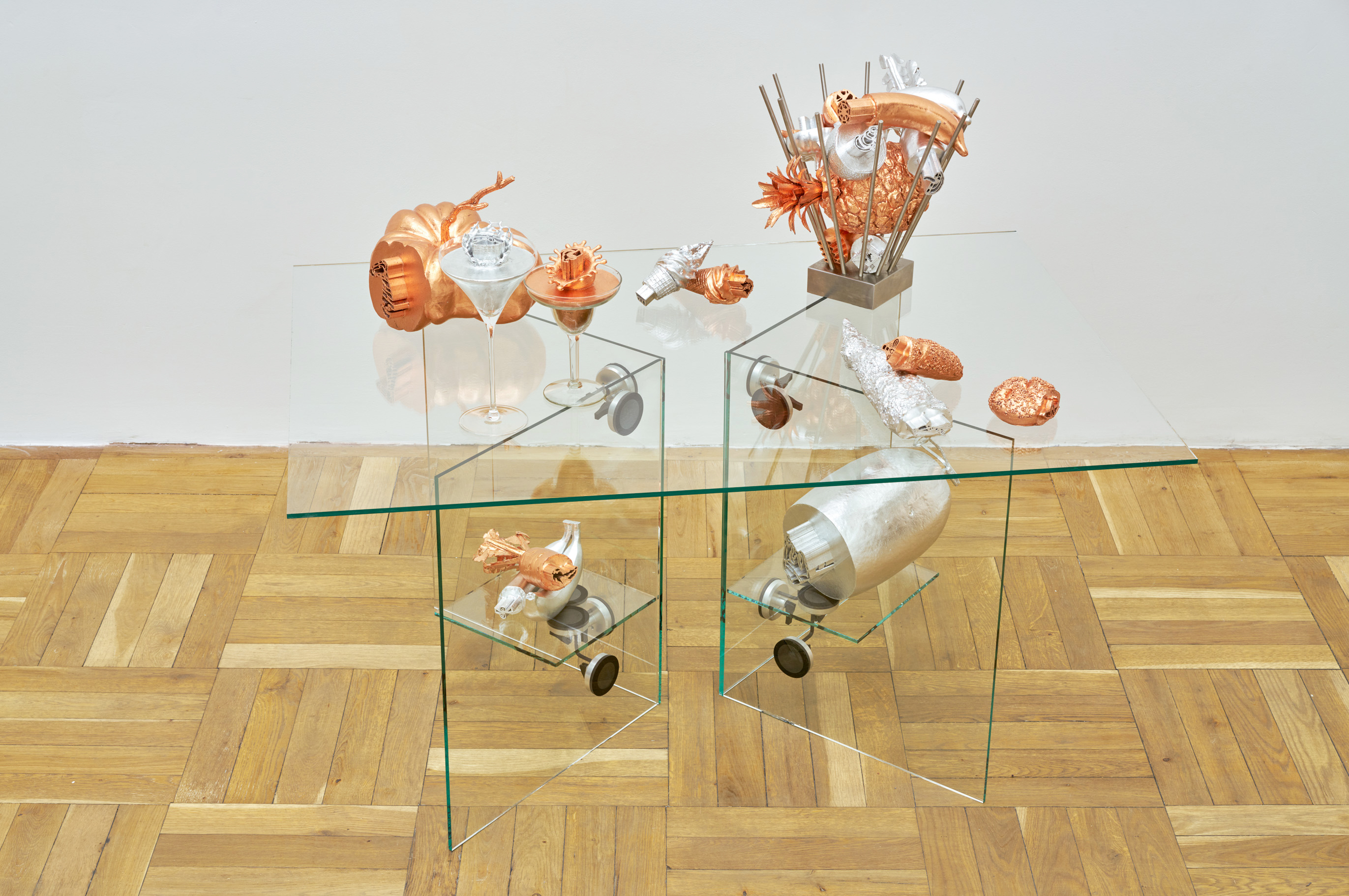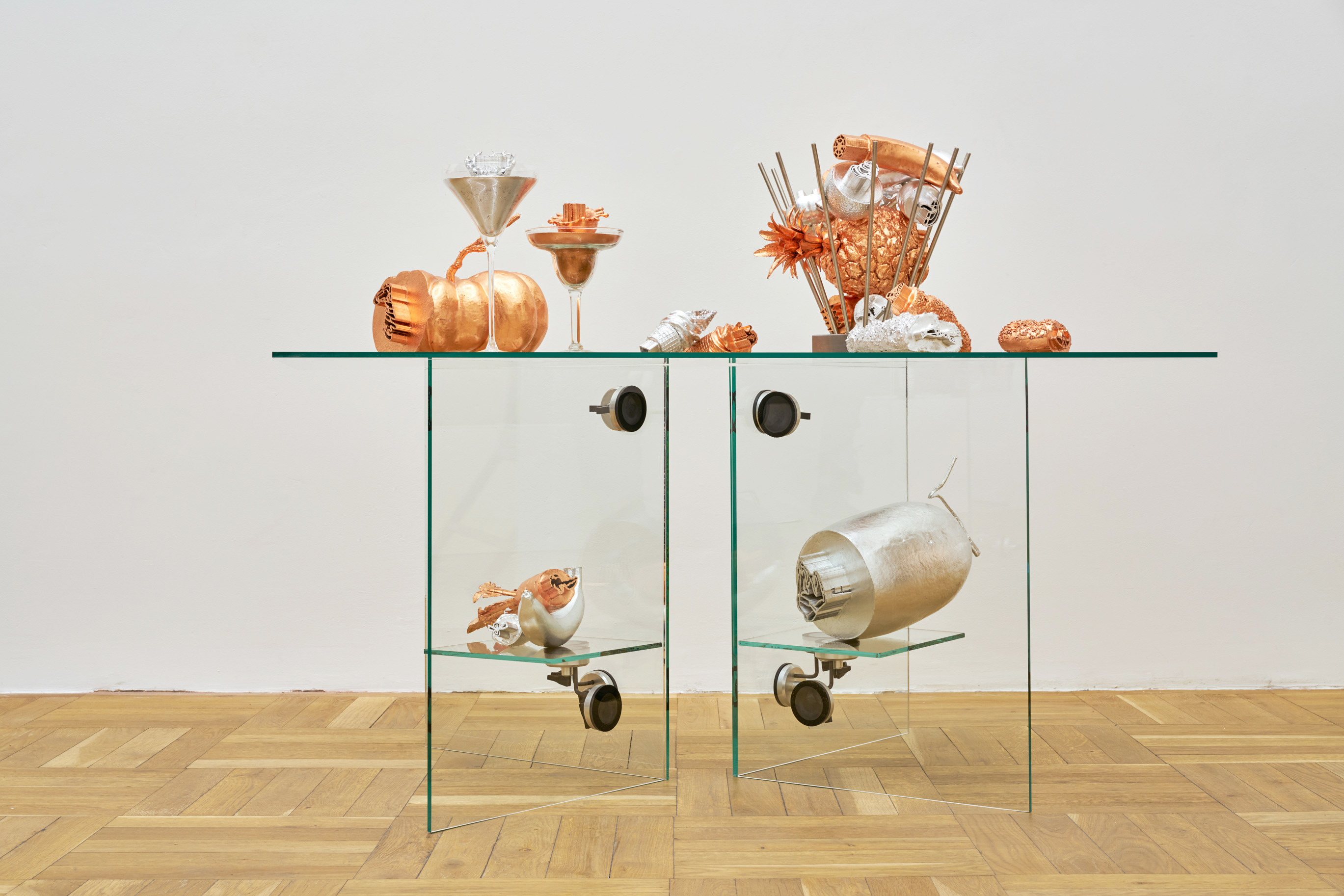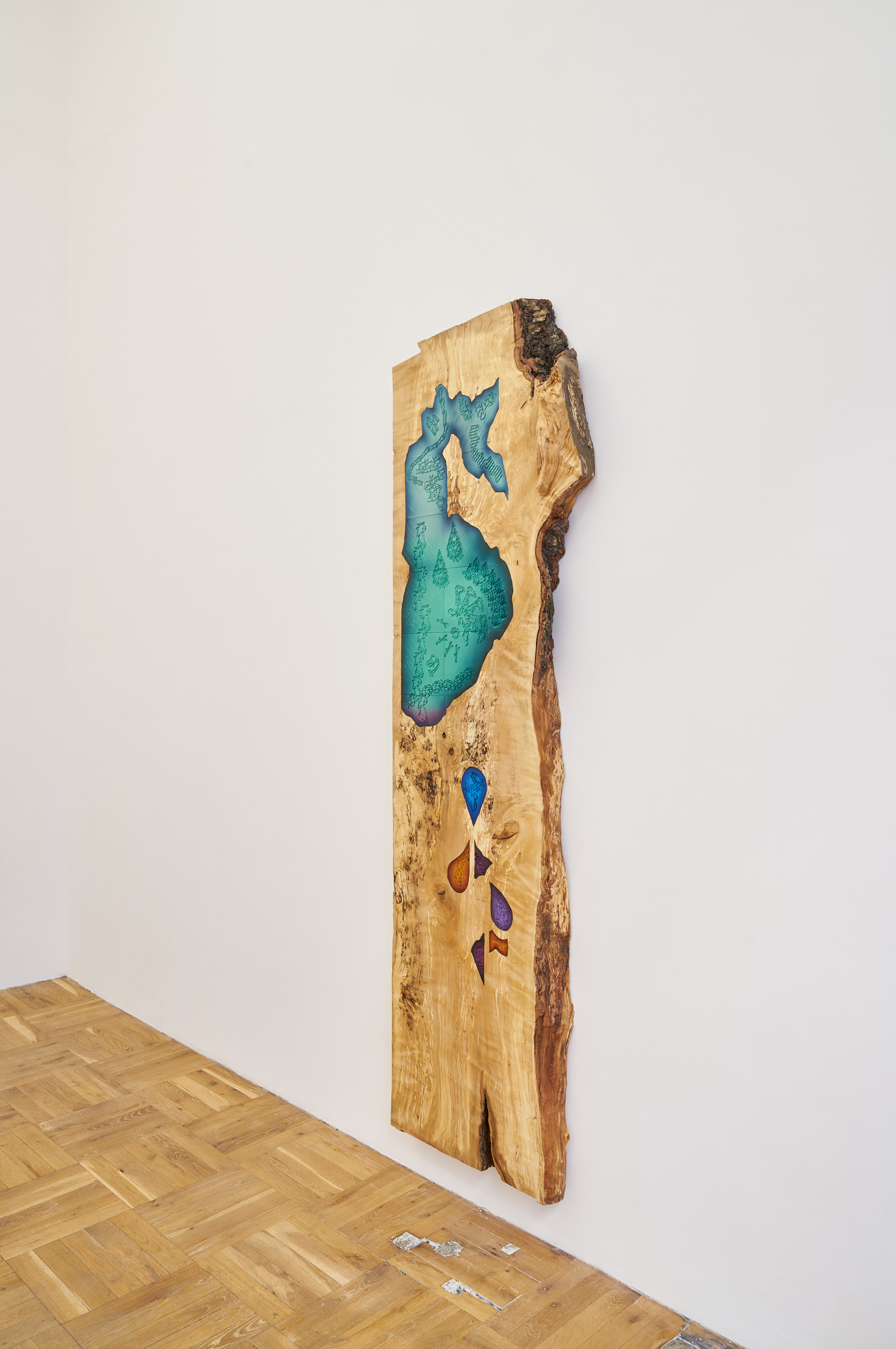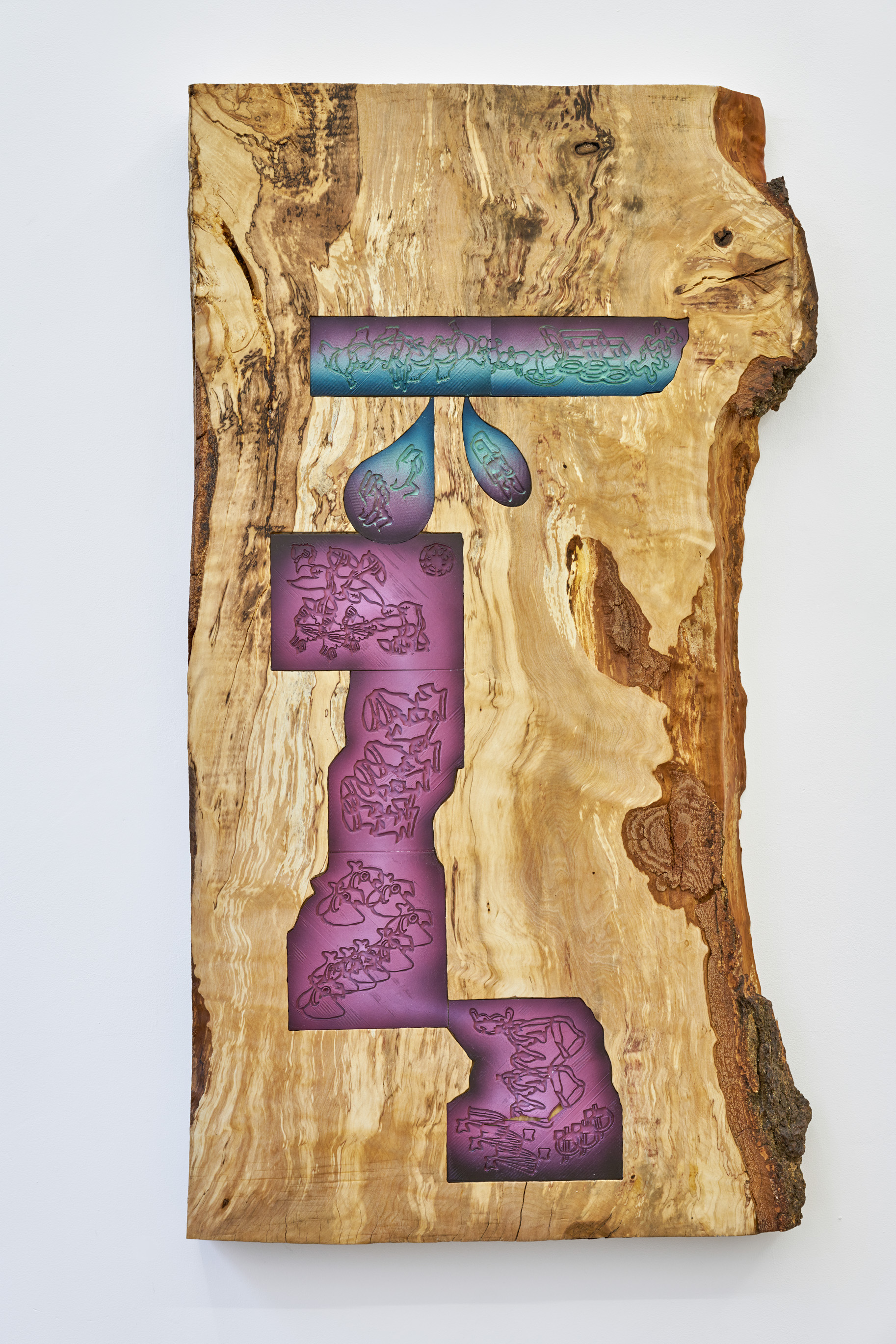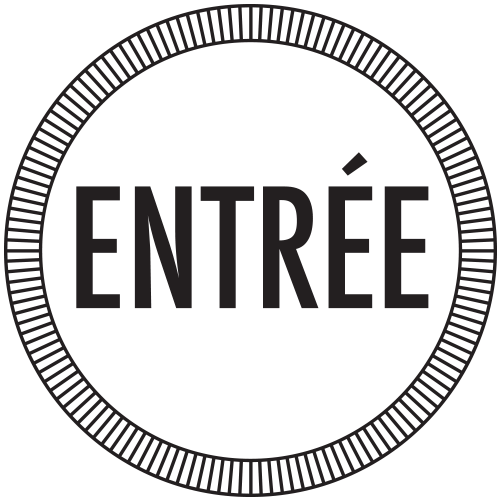March 19th- April 16th, 2016
Anders Holen
Stimulus
The potential agency of things is a recurring topic in Anders Holen’s artistic practice. His works appear as familiar, yet strange objects that point to their creation simultaneously as they reveal their own ability to create, thus blurring the dichotomy between object and subject. The installation exhibited at Entrée alludes to a sort of utility, as if the displayed items are tools for further production.
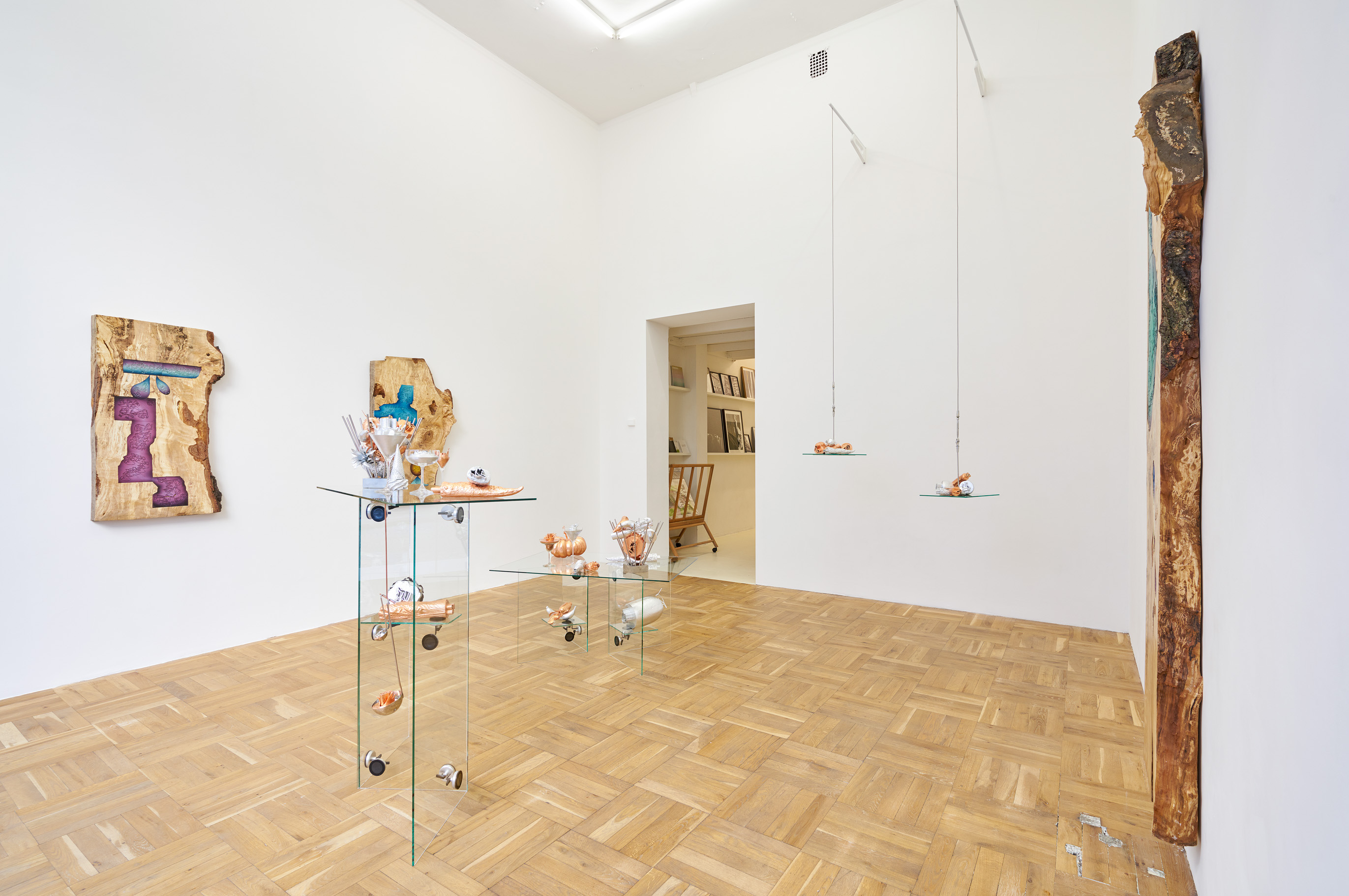
Shiny silver and copper sculptures in
the shape of eggplants, ice cream cones, artichokes, as well as cocktail
glasses and ladles whose content has solidified mid splash, are displayed on
glass tables and in containers. Parts have been carved away from the objects, leaving
them with stamp-like protuberances on their flat, even surfaces. They might be thought
of as highly complex and aestheticized potato stamps, but the seriousness of
both the sculptures and their clinical display absorbs this banality, and thereby
rids the exhibition of any nostalgia regarding potato printing. Instead the
objects raise questions on semiotics, and whether we are witnessing the actual
work, or if they are in fact agents for constructing new artworks.
The abstract symbols protruding from
these objects also appear in brightly colored patterns incorporated into crude
pieces of solid wood mounted on the walls. Repetition of the symbols – as if
one has made the other – creates a significant relationship between the works:
as an object and its referent. The sculptures are inanimate, but through their causal
agency they seem to exude an
inherent potential; it drew its mark
on something else. The Swiss linguist Ferdinand de Saussure believed that a
sign is dyadic, meaning it only consists of two parts; the form of the sign and
its meaning. When looking at Holen’s work, one suspects that it holds a
narrative, something to be decrypted and understood if one can just manage to place
it in the right categories. Meaning eludes us and the work appears as a riddle
where the objects become less familiar and more mysterious.
The symbols themselves do not appear to be decipherable. One might think
of them as originals and their copies, but that does not entirely make sense
either, as they have distinct physical attributes and characteristics. The
natural marks in the wooden surface are as much a pattern as the artificial
symbols, and in any case it seems unlikely that the glossy sculptures actually
made the relief in the wooden surface, because they seem too pristine and too
artificial. They can be thought of as agents, but they are also just another
sign. With lots of questions and few answers, the viewer is turned into a kind
of archaeologist, as if one is presented with artifacts from an excavation
site. The works have inherent qualities resembling tools, but without an
obvious purpose, this triggers an investigative approach among spectators, who attempt
to make sense of it all.
When taking the exhibition title Stimulusinto account, these scientific connotations seem to be well-grounded. The
recurring symbols found in Holen’s work actually derive from a study[1] on cognitive recognition, meticulously
developed for the sole purpose of being perceived as ‘non-objects’, i.e. as
completely abstract signs.
So if the meaning of the sign eludes us, what remains in Holen’s work is
how it exposes our inherent need to classify and categorize signs and symbols.
Instead of looking for what the artworks mean, I start to look at what they do. Thus the actual works bring to mind,
not the idea on which they are based, but their inherent potential to make art themselves.
Conceptual art has been described as when “the idea becomes a machine
that makes the art.” This particular phrasing and the image it conjures
fascinate me, and I think the notion of “a machine that makes the art” can also
apply to Anders Holen’s work: only in this case it is in fact the artwork that
becomes the machine. It exists in a semiotic chain of indexical signs with no
clear start or finish, one object points to another which points to yet another.
Maybe they are not mere signs, but instruments for acknowledging both the it and the self as participants.
[1] Potter, Mary C. and Judith F. Kroll, “Recognizing words, pictures, and concepts: A comparison of lexical, object, and reality decisions”, Journal of Verbal Learning and Verbal Behavior, Volume 23, Issue 1, February 1984, Pages 39-66
Text by Espen Johansen



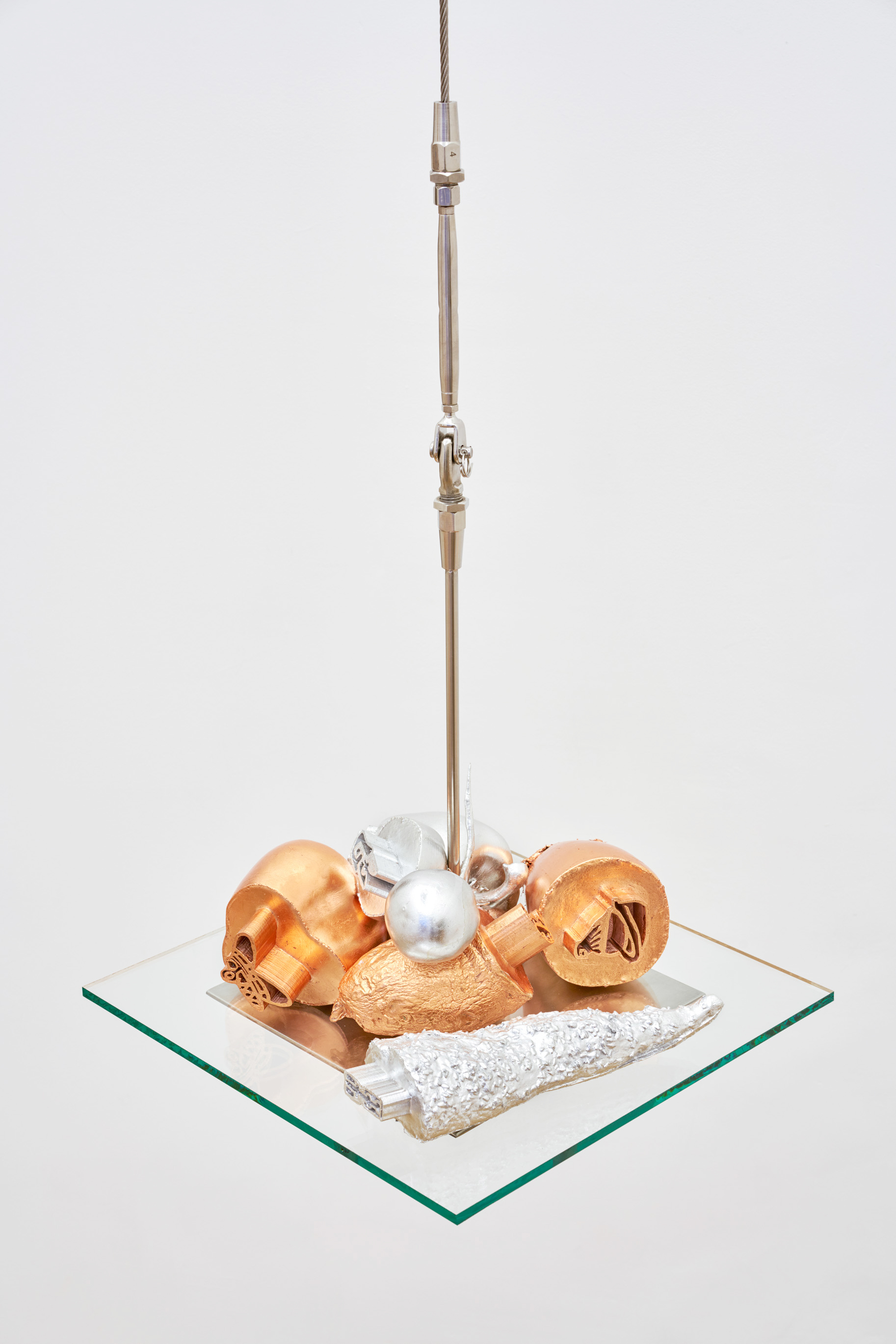


Entrée March 19th, photographed by Bent René Synnevåg.
